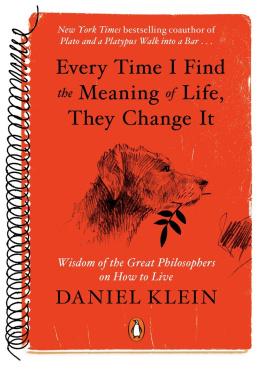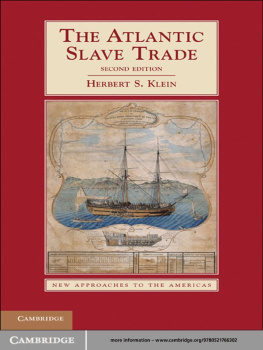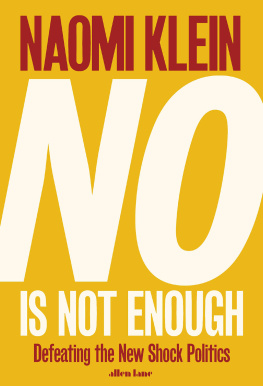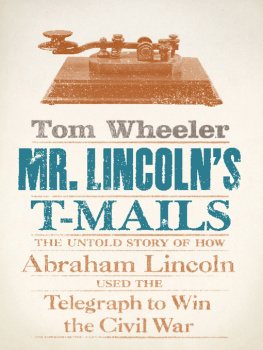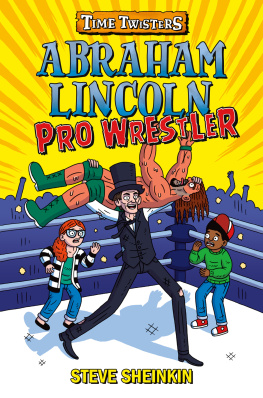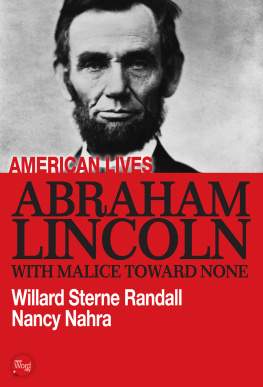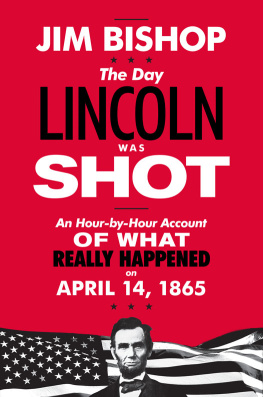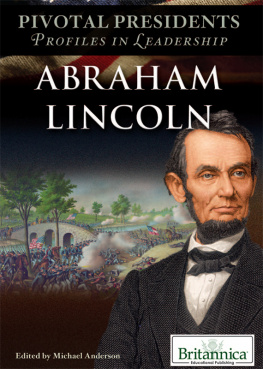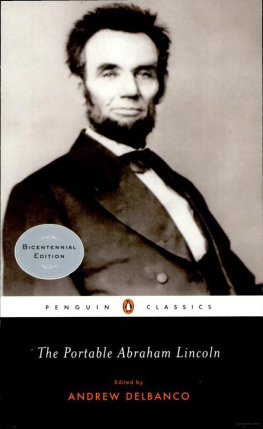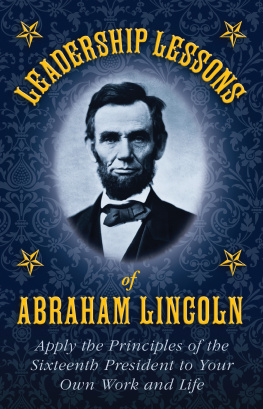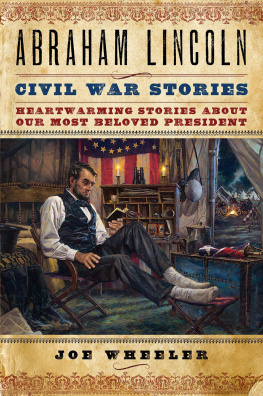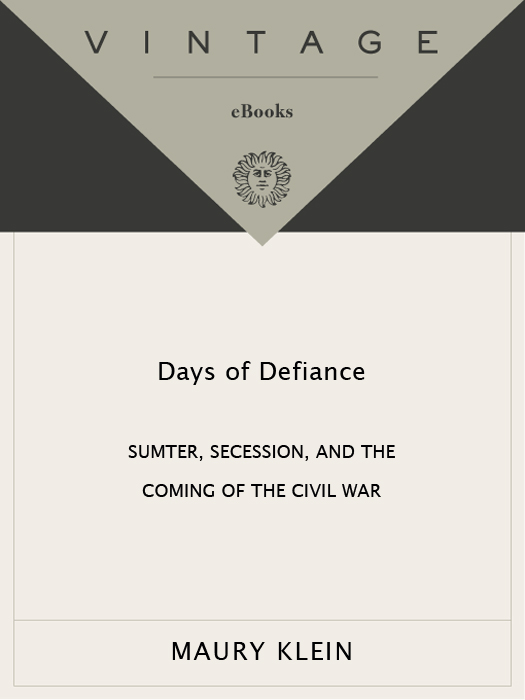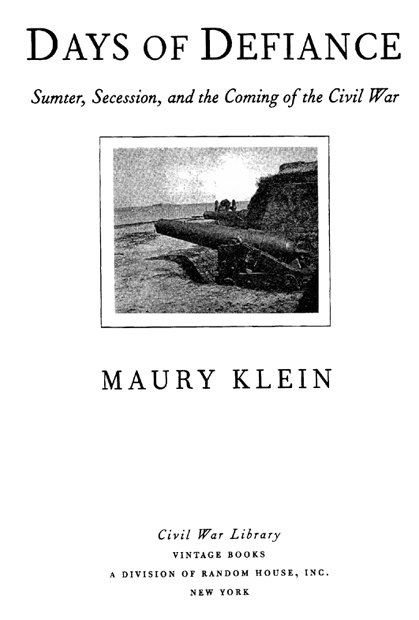How war came is the subject that Klein addresses here. He does it so authoritatively, and with such an articulate flair, that his book belongs on the shelf of every serious student of the American heritage. Indeed, Klein is now the worthy successor of such highly esteemed causitive historians as Avery O. Craven and David M. Potter.
Maury Klein offers a well-written account of the critical months following Lincolns election to the presidency, his stimulating narrative clearly tracking the downward spiral that culminated in South Carolinas April 1861 attack on Fort Sumter.
A perceptive and balanced account, among the finest we have in our historical literature.
Drawing heavily on diaries and letters, Klein seeks to show what the people of both regions were like, how they felt, and insofar as possible what they were thinking a highly readable account.
Clear elegant outstanding.
A compelling account of the folly and brilliance displayed as the nation veered toward collapse a dramatic narrative.
A marvelously insightful and beautifully written account [of] an incredible period that resonates through American life to this day.
ALSO BY MAURY KLEIN
Unfinished Business: The Railroad in American Life
The Flowering of the Third America
Union Pacific: The Rebirth, 18941969
Union Pacific: The Birth, 18621893
The Life and Legend of Jay Gould
Prisoners of Progress: American Industrial Cities, 18501920
(with Harvey A. Kantor)
A History of the Louisville & Nashville Railroad
Edward Porter Alexander
The Great Richmond Terminal
MAURY KLEIN
D AYS OF D EFIANCE
Sumter, Secession, and the Coming of the Civil War
Maury Klein is professor of history and director of the Honors Program at the University of Rhode Island. He is the author of nine books, as well as numerous articles and reviews on a wide range of subjects dealing with American history during the nineteenth and twentieth centuries. He lives in East Greenwich, Rhode Island, with his wife, Kathleen, and three stepchildren.
FIRST VINTAGE CIVIL WAR LIBRARY EDITION, MAY 1999
Copyright 1997 by Maury Klein
All rights reserved under International and Pan-American Copyright Conventions. Published in the United States by Vintage Books, a division of Random House, Inc., New York, and simultaneously in Canada by Random House of Canada Limited, Toronto. Originally published in hardcover in the United States by Alfred A. Knopf, Inc., New York, in 1997.
Vintage Books, Vintage Civil War Library, and colophon are trademarks of Random House, Inc.
The Library of Congress has cataloged the Knopf edition as follows:
Klein, Maury.
Days of defiance: Sumter, secession, and the coming of the Civil War / by Maury Klein.
p. cm.
1. United StatesHistoryCivil War, 18611865.
2. United StatesPolitics and government19571861.
3. SecessionSouthern States.
4. Fort Sumter (Charleston, S.C.)Siege, 1861.
I. Title
E471.K48 1997
973.7dc21 96-39156
eISBN: 978-0-307-83225-2
Author photograph Susie Dittelman
www.vintagebooks.com
v3.1
For Kathy
With love and thanks for showing me the way home
There are two things that a democratic people will always find very difficult, to begin a war and to end it.
Alexis de Tocqueville
Contents
A sixteen-page insert of photographs follows
Preface
Later, much later, when the passions in this most passionate kind of war had finally cooled enough for sober and detached reflection, and when the generation that understood what those passions meant had passed on, the same stubborn question presented itself: How could the oldest, deadliest, most divisive conflict of a proud nation come down, after decades of bitter strife, to a dispute over an insignificant fort squatting on a hunk of rock in the harbor of the Souths oldest and most defiant city? That a great tragedy had occurred all sides agreed, but they differed over what exactly had happened; as to why it had happened, they argued with a ferocity that approached the passions of the original dispute. Even mild-mannered professors, cloaking their differences in the guise of scholarship, took up cudgels of biting controversy against one another. But their debate was born of hindsight; they knew all too well the ghastly slaughter that followed the rending of a nation. What of the original disputants, who feared for the future but could not know that their actions or inactions would produce the bloodiest war in American history?
This book attempts to tell the story through their eyes, as they saw it at the time. It is not just about the Sumter crisis itself but about what it signified to that generation. It seeks to show what America was in 1860 and what it was becoming, and why certain forces drove her people into deadly and unavoidable conflict. I have centered the story around key characters, believing that history is at bottom the story of people, and that the stuff of peoples lives is no less important than their public record.
The five months between the election of Abraham Lincoln and the firing on Fort Sumter was a time unlike any other in American history. The crisis that led up to the attack proved to be, in Matthew Arnolds magnificent phrase, one world dying, another struggling to be born. In that fateful transition the world going under was not just that of the Old South but, more important, that of the old American Republic as conceived by the Founding Fathers. In its place arose a new, more diverse, and far more complicated nation shaped by revolutions in transportation and communication. This transformed society, its nationality challenged anew by unexpected forces such as an enormous wave of immigration, changed and grew so rapidly as to shove past quarrels ever deeper into the dustbin of history. Yet the lessons of that forgotten past are worth retrieving; they remain both vivid and relevant to later generations.
It has long been the conventional wisdom that the great achievements of the Civil War were the preservation of the Union and the abolition of slavery. For most of American history the latter result has, for good reason, been the most heavily stressed and studied. Nevertheless, the case can be made that no result of the war was more important than the destruction, once and for all (except in the minds of occasional diehards), of the idea of secession. One nation, indivisible, with the hope of liberty and justice for all. Even the promise of those goals required the death of secession no less than that of slavery. Today, more than 135 years after the secession crisis, in a vastly different world and context, we seek to answer the same basic question that baffled the finest minds of that era as it does our own: What is an American? This book, in its way, is an inquiry into that question.
THE WRITING OF this book would not have been possible without the cooperation of many people at archives and libraries throughout the country. To those who answered my inquiries I tender sincere thanks. In particular I wish to express gratitude to Henry Fullmer and Laura Costello at the South Caroliniana Library, and to Alex Moore, Mark Wetherington, Kathleen Howard, Peter L. Wilkerson, Pat Hash, and Anne Rosebrock at the South Carolina Historical Society. In my own home library at the University of Rhode Island, special and continuing gratitude goes to the entire staff, particularly Marie Beaumont, Vicky Burnett, Kathe James, Marie Rudd, and Betty Sekator, for aid above and beyond the call of duty. No one performed more useful tasks more cheerfully than my secretary, Deborah Gardiner. My agent, Marian Young, was ever helpful with advice and encouragement. Special thanks go to Ash Green, my editor at Knopf, for his guiding hand in the shaping of the manuscript, and to his assistant, Jennifer Bernstein. Whatever errors remain are my responsibility alone. Finally, I wish to salute the memory of Bell I. Wiley, my mentor in graduate school, who did so much to nourish and cultivate my interest in the Civil War.



